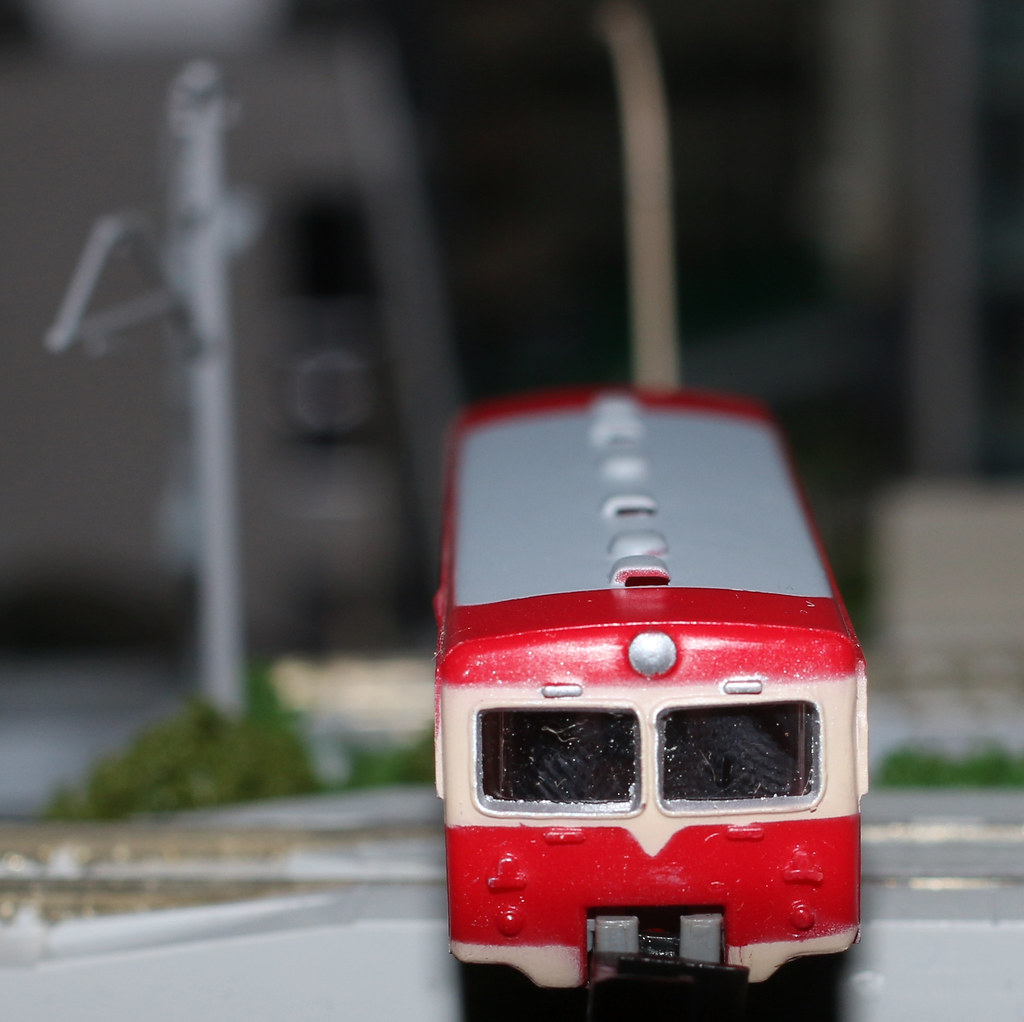
When it comes to Japanese railcars, the original Kiha series is the true classic.
A small railcar used during off-peak lines and manufactured by the Japanese National Railways (JNR) in 1954 (Showa 29), the name is a general term for convenience and taste and is not a series name of the JNR system.
The inspiration came when Nagasaki Sonosuke, the president of Japanese National Railways visited Europe and saw that West Germany had small railcars “Schienen Omnibus” used for local lines. When he returned to Japan, he ordered the development of a similar small diesel car which many of the engineers and operators not to keen on the idea, considering they were developing large diesel railcars with lightweight liquid-transmission bodies.
Manufactured by Tokyu Car Manufacturing, the design of the railcar was to apply the design of a bus to a railway vehicle in order to improve the balance and increase the number of trains on sparse local lines. The railcar featured a two-axle system and the length was over 10m and equipped with a diesel engine for buses and a total of 49 cars were put in local lines throughout Japan.
When it was released, it was not well-liked. In fact, Ishihara Yonehiko who contributed an article to “Trends in Diesel Trains in Japanese National Railways” wrote, “Frankly, I don’t think it’s very versatile, because there are very few lines with low traffic enough for this type to be suitable. On top of that, a small car with a capacity of about 50 people has a one-way transport capacity of 1,000 people per day, requiring 20 round trips even on quiet lines inside and outside, which is unrealistic. However, it seems that 120 people are the limit even if it is packed in a small car, and even if the passenger train is replaced, it will be difficult to create a timetable because it will be necessary to operate in triplicate during rush hours. I am quite frankly expressing that it is a ‘useless vehicle’. First of all, the use of light vehicles should be limited to about 20 vehicles”.
As a result, the number of JNR railbuses exceeded Ishihara’s expectation of 20 but 49 were manufactured in a short period of time until 1956 (the emphasis was placed on shipping to Hokkaido in the latter period). On local lines, problems with transportation capacity during rush hours were revealed, and they were quickly replaced with general diesel railcars.
While Nagasaki’s heart was in the right place, the truth is that it was a railcar that was much too small to handle rush hour or passenger increases.
In addition, because the overall control function was not installed in order to reduce manufacturing and development costs, it became necessary for a driver to get into each car in order to carry out tandem operations, resulting in increased labor costs related to driving. This resulted in an increase in costs. Also, due to the wide signal interval, it was not possible to continue driving like a bus.
Also, it lacked versatility because it was not suitable for long-distance driving because it did not have a toilet.
The lifeline for the initial Kiha 01-03 was just 10 years. All cars were scrapped, dismantled or now sitting in a museum in parts of Japan today.
There is the Kiha 01, the Kiha 02 (Kiha 10000), the Kiha 03 (Kiha 10200) and the Kiyuni 01 (a modified version of the Kiha 01).
Source: Photo by Railway Grandpa/Raillab / https://raillab.jp/photo/160832
Image Source: Railwayinmemory / More Kiha 02 photos found here: http://railwayinmemory.sakura.ne.jp/HP010_Saza-DC02.html
While the Kiha03 can be found preserved at the Asahikawa Depot and was designated as a quasi-railway monument in 1967, it has now found a home at the Otaru City Museum (Railway, Science and History Museum) as of 2018.
The Kiha 02 was preserved at the Hizen-Ikeno Station ruins and became a children’s library but it fell into disrepair and was dismantled in 1983.
I personally don’t own a Kiha 01 or an 03, frankly because they are older vehicles and the asking price is quite high but I do have an older TOMIX of the Kiha 02 (this was made by Tomy, way before Takara Tomy).
I will be reviewing the TOMIX 2252 J.N.R. Rail Bus Trailer KIHA-02. The Kiha 02, which 17 cars (10012-10028) were produced and manufactured in 1955 (Showa 30) had a body structure different from the 1st and 2nd cars. 10012-10022 were developed for cold climates (manufactured in Hokkaido), 10023-10028 for warmer climates (used in Chugoku and Kyushu) but were numbered as Kiha 02 1-17.






Of course, looking at the details of this passenger car, you see how much model train technology has come a long way since the release of this Kiha-02. The details aren’t the best, the paint is not the best but that’s how things were back then.
Also, if you were to get the older 2001 or 2006 TOMIX Kiha-02 set (which included a motor car and passenger car) which was released to celebrate the 25th anniversary of TOMIX, one thing you will notice is that paint details are much better. The red is darker maroon and the cream is a little darker. Windows are much more detailed and painting is much better.
Underneath, it shows TOMY HONG KONG and one thing you will notice that the older releases had an attempt to paint certain parts silver, especially around the windows. They don’t do this anymore with the 2001 or 2006 remakes.
But the two TOMIX passenger Kiha-02 passenger cars I have were made long ago. Possibly in the ’90s, not entirely sure. But they still run fine decades later! Thank goodness for metal wheels!
But this is a classic TOMIX release of a classic vehicle!
